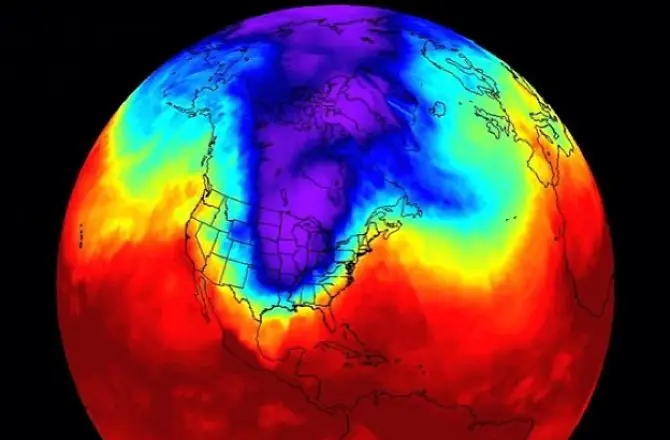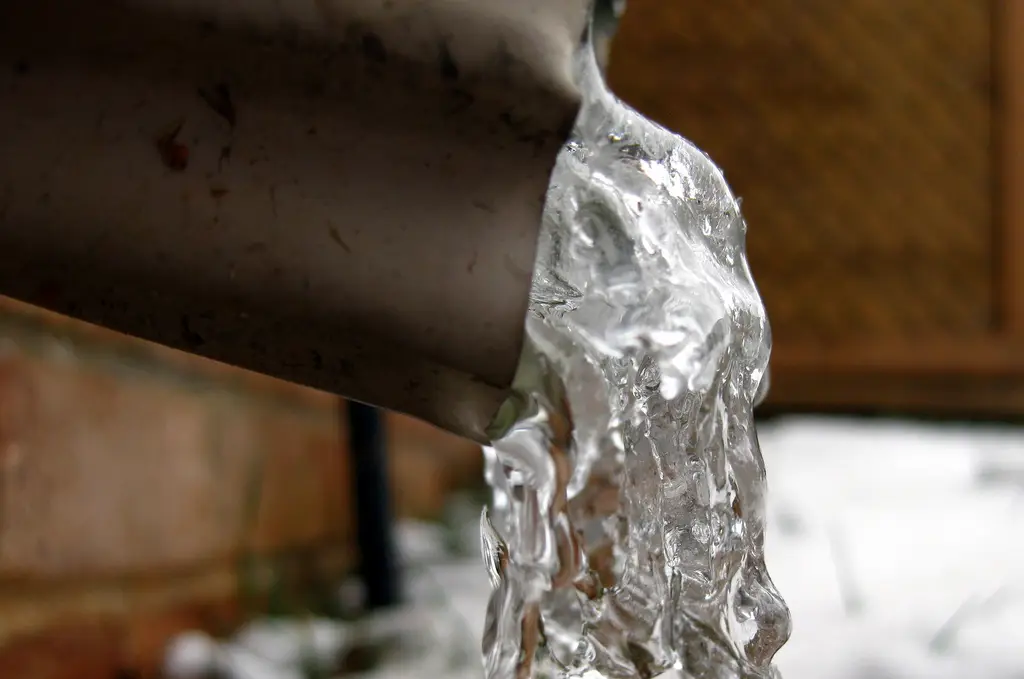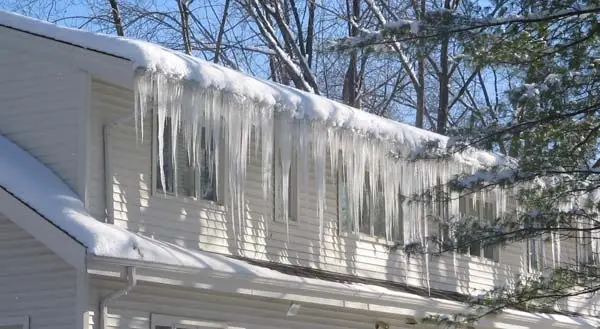Surviving the Polar Vortex: 5 Ways to Protect Your Home from Frigid Temperatures
 New England is known for its rough winter weather and freezing temperatures. Weather forecasters are predicting dangerously low temperatures in our area this winter season with a possible polar vortex looming. A polar vortex is a large area of low pressure and cold air surrounding the Earth’s poles. It rotates in a counter-clockwise flow of air that keeps temperatures consistently cold.
New England is known for its rough winter weather and freezing temperatures. Weather forecasters are predicting dangerously low temperatures in our area this winter season with a possible polar vortex looming. A polar vortex is a large area of low pressure and cold air surrounding the Earth’s poles. It rotates in a counter-clockwise flow of air that keeps temperatures consistently cold.
While most of us don’t look forward to subzero temperatures, the good news is that there are ways that you can stay a step ahead of the polar vortex while keeping your home toasty and warm:
1. Choose Windows that Handle High Water Impact
Cold and blowing snow can be bone-chilling—and let’s not forget about sleet and freezing rain. One of the keys to ensuring your home stays warm during the polar vortex is to choose windows that block out water from the various elements of winter. It’s ideal that your windows can handle water impact of up to 8” per hour, which ensures that snow, sleet, and freezing rain won’t stand a chance. It is also important for your windows to have a welded sill pan and a built-in weep system designed to eliminate water penetration and to weep water away from your home. Lastly, when looking at windows make sure your windows have a sill dam that combines interlocks, air locks, triple-fin weather-stripping, water barriers to divert water and cold air.
 2. Don’t Forget About Air Infiltration
2. Don’t Forget About Air Infiltration
When the wind chill reaches dangerously low temperatures, it’s vitally important that your windows are engineered to reduce as much air infiltration as possible. Air infiltration is the introduction of outside air making its way into your home—which is the opposite of what you want to happen during a polar vortex.
It’s virtually impossible to eliminate all air from entering your home, but some windows are much more equipped for the job. For example, Elements Windows by Soft-Lite effectively eliminate drafts with a rating of .01 CFM. This means that just one of these windows is more efficient at blocking out air than 23 of our competitors’ windows combined. Using a can of soda for measurement, the Elements window has an air infiltration rate of .8 of a soda can while Pella, Anderson and Marvin leak 18 soda cans of air per minute.
3. Don’t Ignore Your Front Door
Your entry door can also make a big impact on how the polar vortex impacts your energy bills. A new energy efficient door is ideal, but you can also install new weather-stripping to block out wind and keep more money in your bank account.
However, if your door is too far gone, choose a new door with a polyurethane foam core to maximize energy savings. It’s also smart to add Q-Lon weather stripping to keep moisture and air out of your home.
4. Prepare Your Pipes
 As we face arctic sub-zero temperatures, frozen and ruptured pipes are bound to occur and devastate many homes as frozen pipes may swell up and crack with seeping ice. Sometimes frozen pipes may appear in good condition without any visible leaks, but when thawed start to pour damaging water into your home. Besides adding foam sleeves to help insulate pipes to keep them from freezing, The American Red Cross recently published pipe freeze prevention tips:
As we face arctic sub-zero temperatures, frozen and ruptured pipes are bound to occur and devastate many homes as frozen pipes may swell up and crack with seeping ice. Sometimes frozen pipes may appear in good condition without any visible leaks, but when thawed start to pour damaging water into your home. Besides adding foam sleeves to help insulate pipes to keep them from freezing, The American Red Cross recently published pipe freeze prevention tips:
- Drain water from swimming pool
- Water sprinkler supply lines and any other lines in unheated areas to manufacturer’s directions
- Remove, drain and store hoses.
- Open the outside hose bibs to allow water to drain and keep the outside valve open to make sure any remaining water can expand without causing the pipe to break.
- Insulate hot and cold water pipes in the following areas: basement, crawl space, attic, garage and under kitchen and bathroom cabinets.
- Consider installing UL listed heat, freeze free cable and/or PSR heating cables on exposed water pipes.
5. Prevent Ice Dams
Ice d ams can easily form when your roof is poorly insulated and ventilated, allowing your attic and roof to heat up and melt snow that has collected on your roof. When the snow on your roof melts, it trickles down and freezes back into ice, typically at your home’s soffit (the underside of your eaves) or by the gutters where heat isn’t collecting and freezing temperatures remain. It’s at this point that ice begins to build up and an ice dam forms at the edge of your roof. Some important tips include:
ams can easily form when your roof is poorly insulated and ventilated, allowing your attic and roof to heat up and melt snow that has collected on your roof. When the snow on your roof melts, it trickles down and freezes back into ice, typically at your home’s soffit (the underside of your eaves) or by the gutters where heat isn’t collecting and freezing temperatures remain. It’s at this point that ice begins to build up and an ice dam forms at the edge of your roof. Some important tips include:
- Remove leaves and debris from your gutter system while you can.
- When the frozen ice that’s lifted your shingles melts once again, water will seep through your roof and into your home unless you have Roof Deck Protection and at least 3’ of Leak Barrier (we use 6’) around your roof’s eaves, rakes, sidewalls, and chimney as the water will leak into unprotected areas of your home.
- Once the ice dam has grown so big that water cannot continue to collect and freeze on the ice dam itself, the water will find a new path-possibly your walls and ceilings which is an extremely costly repair.
- Proper insulation AND ventilation are the keys to preventing ice dams. It doesn’t matter how much insulation you put in your attic, if you don’t have enough ventilation, your home is prone to developing ice dams because any warm air that might escape into your attic will collect rather than dissipate.
- In a perfect world, your attic should be the same temperature that it is outside.
- You should have 1” sq. ventilation per sq. foot of attic space to at least R-38.
If you’ve ever had mold or moisture problems in your home, they are symptoms of improper insulation and ventilation. These issues do NOT go away- they get worse.
Keep an eye out in your home for these early ice dam warning signs:
- Moisture
- The temperature inside your attic is not the same as the temperature outside
- Condensation on items and/or signs of water where it shouldn’t be
- If your roof is flat or slightly pitched, bent, bowed, or you have cracked rafters
- Rafters spaced more widely apart than they should be
- Hearing popping sounds
- Fire, termite, rot, or moisture damage
- Unreasonably high energy bills
- Drafts around your chimney, recessed lighting receptacles and/or bathroom fans
See any of these signs? Want to learn how to ensure your roof will be safe from ice dams? Let one of our Winter Ready Home Experts help!
For more home improvement tips on how you can battle the winter weather this season, contact Stephanie today at svanderbilt@mycoastalwindows.com or 978-304-0495. You can also download our free Winter Ready Home Guide.




